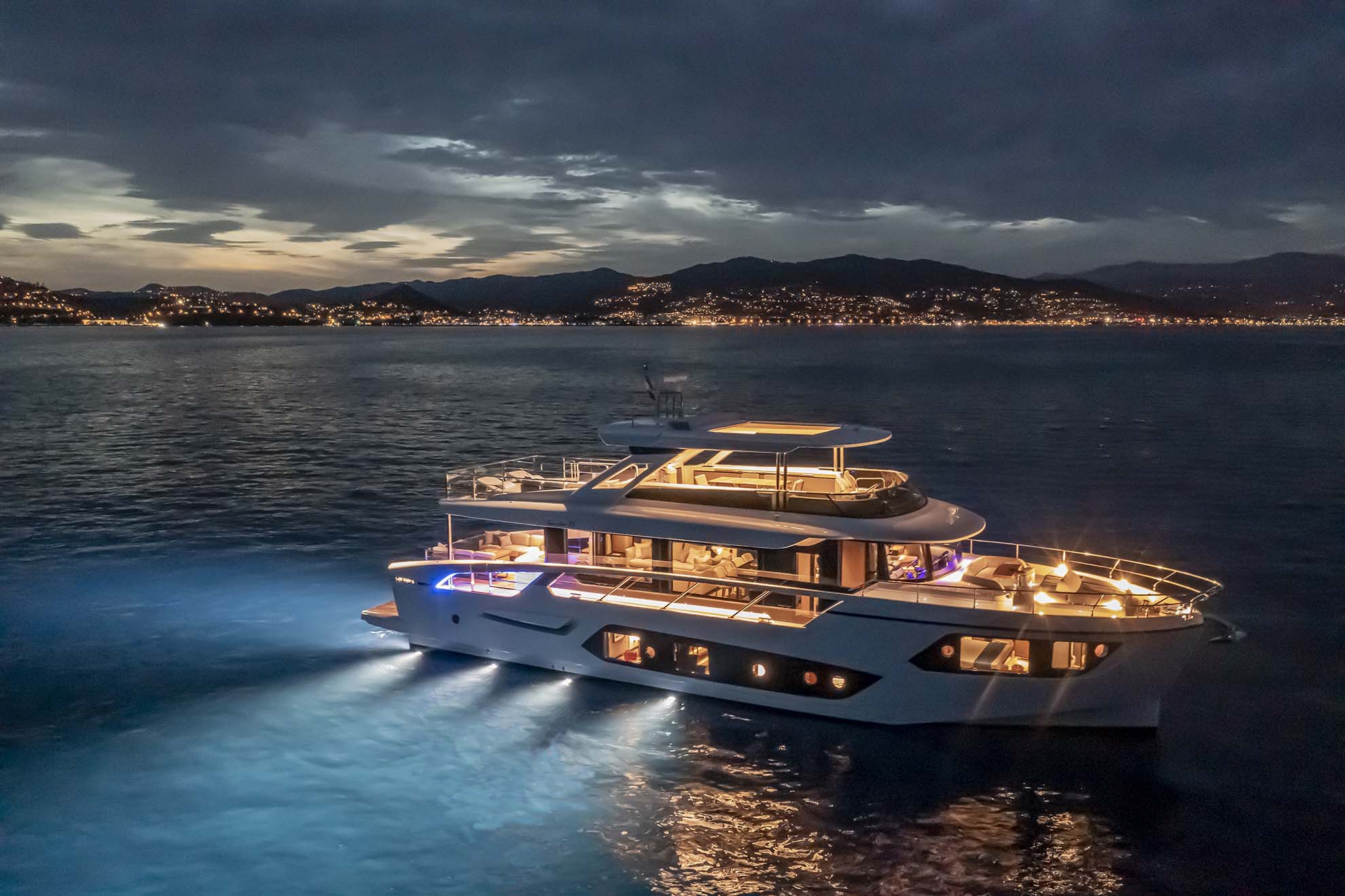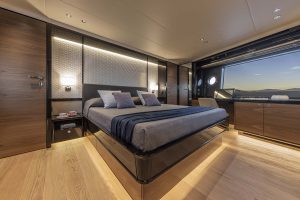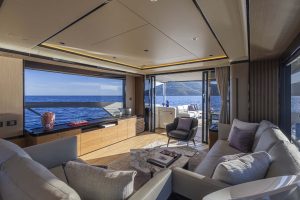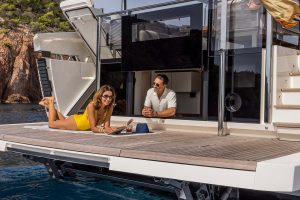
If you measure it, it is just a matter of sixty centimetres.
The Navetta 75 is the new flagship of the Absolute range, stealing the crown from the smaller 73. When we are talking about a 23-metre, that might not seem like a lot. The latest in the dynasty gives a good idea of how the Podenzano-based yard has evolved, after its first outing | four years ago | in the world of big boats coming in under the EU 24-metre limit. It is now showing that it has become a point of reference in that crowded and highly competitive sector.
The firm is doing so starting from its DNA, from what has always set Absolute navettas apart: they are roomy, quiet and have plenty of natural light. You just have to get on board and do a few miles to feel how quickly you feel at home.

I shall start from the master cabin, one of its strong points. It is on the main deck and, being full beam, gets the most out of the maximum width of the boat, a technique borrowed from much larger yachts and which gives the owner sole use of nearly a third of that deck. Luminosity is guaranteed by the two large side windows and there is complete silence, far from the engine room: at cruising speed, all you hear is the sound of the waves on the hull.
It is the same story at the other end of the deck, with the cockpit stretching deep into the stern, with a lot of usable surfaces thanks to the terraced approach. Any separation from the swimming platform is hardly noticeable thanks to the two wide side decks and the central part of the transom made of glass. That means you get luminosity and even more feeling of space with a view of the water.
Still in the cockpit, the same approach has been taken with the ‘œperforations’ on the sides, which provide a view, light and some breeze. Quietness is ensured primarily by the choice to go with IPS propulsion systems: there isn’t much engine vibration, and what there is comes deep down right in the stern.
So, what do you hear at cruising speed? Just the wind and the sound of the water in the wake. It is worth pointing out that both in the cockpit and on the flybridge, the sofas and furniture are all free-standing and so buyers have great liberty to customise the layout.
 The first thing that struck me amidships, in the middle of the large central lounge, was the huge floor to ceiling window surface, and by contrast how small the supports were. So, what does that do? It creates genuine confusion between what is inside, and what is out. There is so much room, real room, but the perceived space is greater still. The lower deck is set aside for guest accommodation, with three cabins and the same number of bathrooms. Here one notices that its access takes a different entrance from the one that leads to the master suite, one of the details that shows how Absolute has taken a close look at on board traffic, and separated the foot flows to make it easier for the crew to work and give the guests greater privacy. For example, to get to the flybridge there are two sets of stairs, fore and aft, and also two doors that open onto the side decks.
The first thing that struck me amidships, in the middle of the large central lounge, was the huge floor to ceiling window surface, and by contrast how small the supports were. So, what does that do? It creates genuine confusion between what is inside, and what is out. There is so much room, real room, but the perceived space is greater still. The lower deck is set aside for guest accommodation, with three cabins and the same number of bathrooms. Here one notices that its access takes a different entrance from the one that leads to the master suite, one of the details that shows how Absolute has taken a close look at on board traffic, and separated the foot flows to make it easier for the crew to work and give the guests greater privacy. For example, to get to the flybridge there are two sets of stairs, fore and aft, and also two doors that open onto the side decks.
 Furthermore, you get to the crew area from the swimming platform. When underway the Navetta 75 shows that it has all of the qualities of the 73, the waterlines have been slightly stretched, but they keep the same look. So, the performance is good, both in displacement mode and when planning.
Furthermore, you get to the crew area from the swimming platform. When underway the Navetta 75 shows that it has all of the qualities of the 73, the waterlines have been slightly stretched, but they keep the same look. So, the performance is good, both in displacement mode and when planning.
There are two IPS 1350s in the engine room, which have been fitted with two small transmission shafts, which means that the two Volvo Penta D13s can be moved closer to the middle of the boat, which helps with the trim; you hardly feel it when you are planning or come back down, with just a small change in pitch angle. With the throttles opened right up we got to 25 knots, using 385 litres of fuel an hour (and 15.40 litres per nautical mile).
But the Absolute 75, as a true navetta, hasn’t been made for speed. You get the best out of it going slower, for example at 18 or 19 knots, and the best cruising speed is 18 knots (220 litres per hour, 12.22 litres per mile), or for longer distances, 11 knots, where fuel consumption goes down to 69 litres an hour, so 6.45 litres per mile, to give a range of as much as 620 miles.
